Development Of SharePoint Add-In Solutions On Office 365 - Part Two
- Manpreet Singh

- Mar 22, 2019
- 2 min read
In this article on “Development of SharePoint Add-In Solution as a (Custom List) on Office 365 – Azure – Part 2”, we will be learning how to configure SharePoint Add-In Solution while creating a custom list on Office 365.
Kindly follow my first article on how to develop a SharePoint Add-In and the second article on Development of SharePoint Add-In Solution as a (Custom List) on Office 365 – Azure- Part1 to read this ahead.
What is SharePoint Add-In?
There are two kinds of SharePoint Add-ins - SharePoint-hosted, and provider-hosted add-ins. In this article, we will see a SharePoint hosted add-in and depending on various scenarios you can conclude what kind of host would you require.
As quoted from Microsoft Docs,
“A SharePoint Add-in is a self-contained piece of functionality
that extends the capabilities of SharePoint websites
to solve a well-defined business problem.”
In a simple explanation, we use add-ins to keep the custom code off the websites to prevent any security or performance glitch on our servers but also manage to achieve the same functionality by storing them elsewhere. It is easily manageable and keeps our sites and servers safe.
We can use all the SharePoint components such as pages, lists, workflows, custom content types, list templates, web parts, and more using the SharePoint Add-In feature.
The SharePoint Add-ins that we will develop and install today will be featured as a tile on the Site Contents page of the SharePoint website where you can click on them and execute your business logic.
Now, as our custom list is added to our solution as per our last article, we will see what else we can do with this feature of having a custom list as an added feature.
List
Here above we have a list tab where you can edit the following features,
TitleList URL – which is the site’s relative URLDescriptionQuick launch – You can allow or disallow the list to be a part of the quick launchHide list from the browser – You can hide/unhide the list from the browser
Columns
Here under the column section, you can add a variety of columns with all types and mark them if you want them as required or not.
You just have to type in to add the default columns or you can create a new desired column and choose the type according to the field and your requirement.
Content Types
Here, you can manage the content type on your custom list and even you can add a new content type and choose if you want it to be a part of the New Menu option.
You can choose among the content types and mark them as default to your desired content type.
Views
Under the view section, you can create views and modify the views and choose which columns you want on the view. You can specify the row limit of the views and specify the view if you want it to be read-only.
So here was our configuration of the custom list on the SharePoint Add-In on Office 365. We will see new features of SharePoint Add-In in the upcoming article.
Until then, keep reading & keep learning.


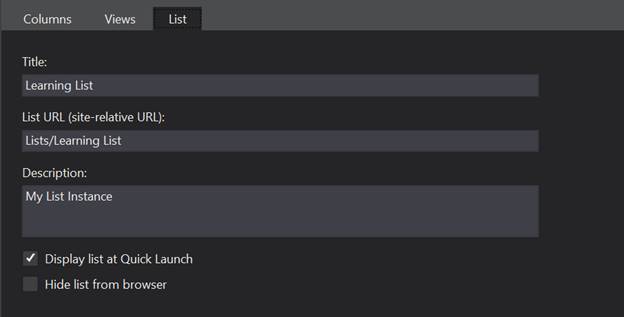

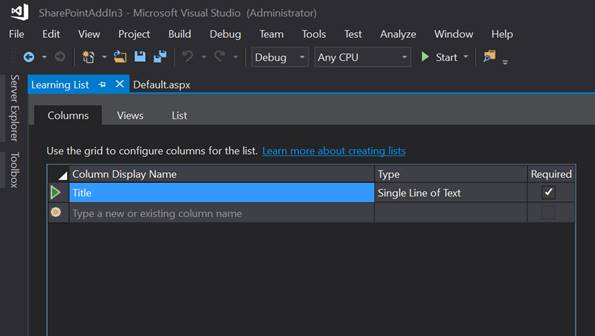

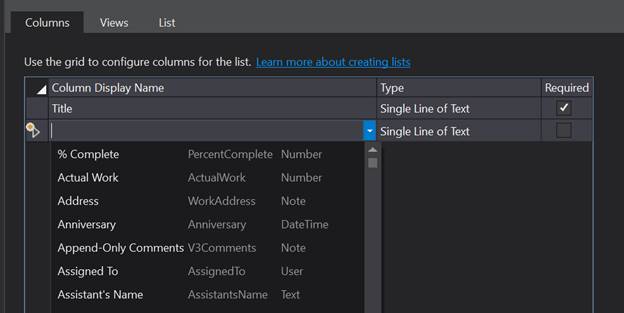

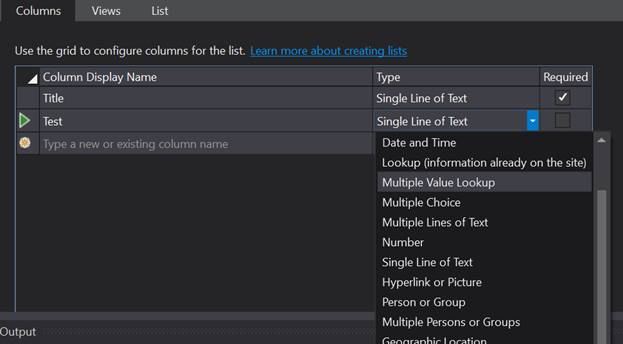

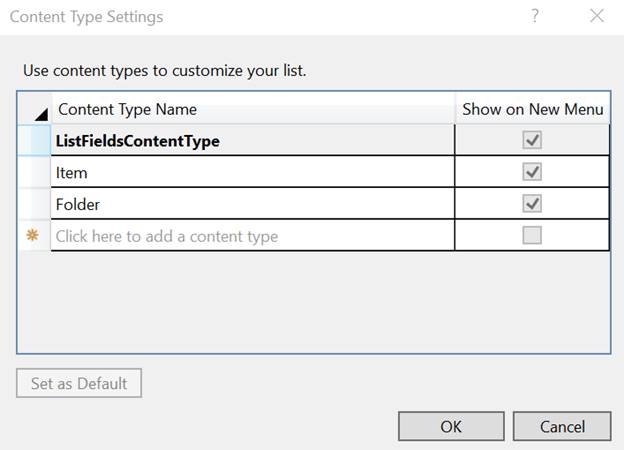

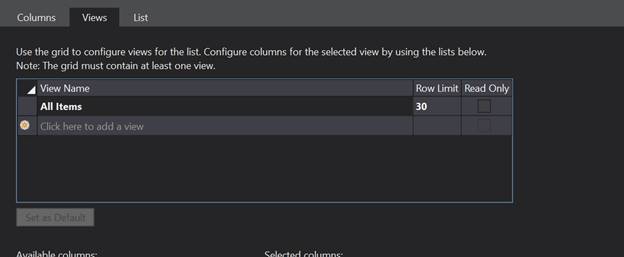

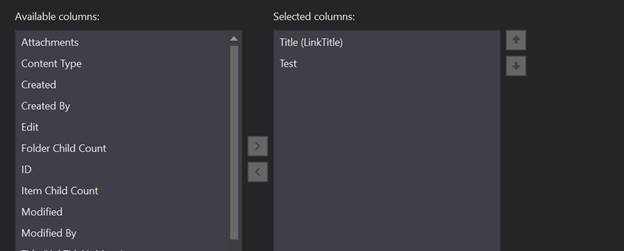



Comments